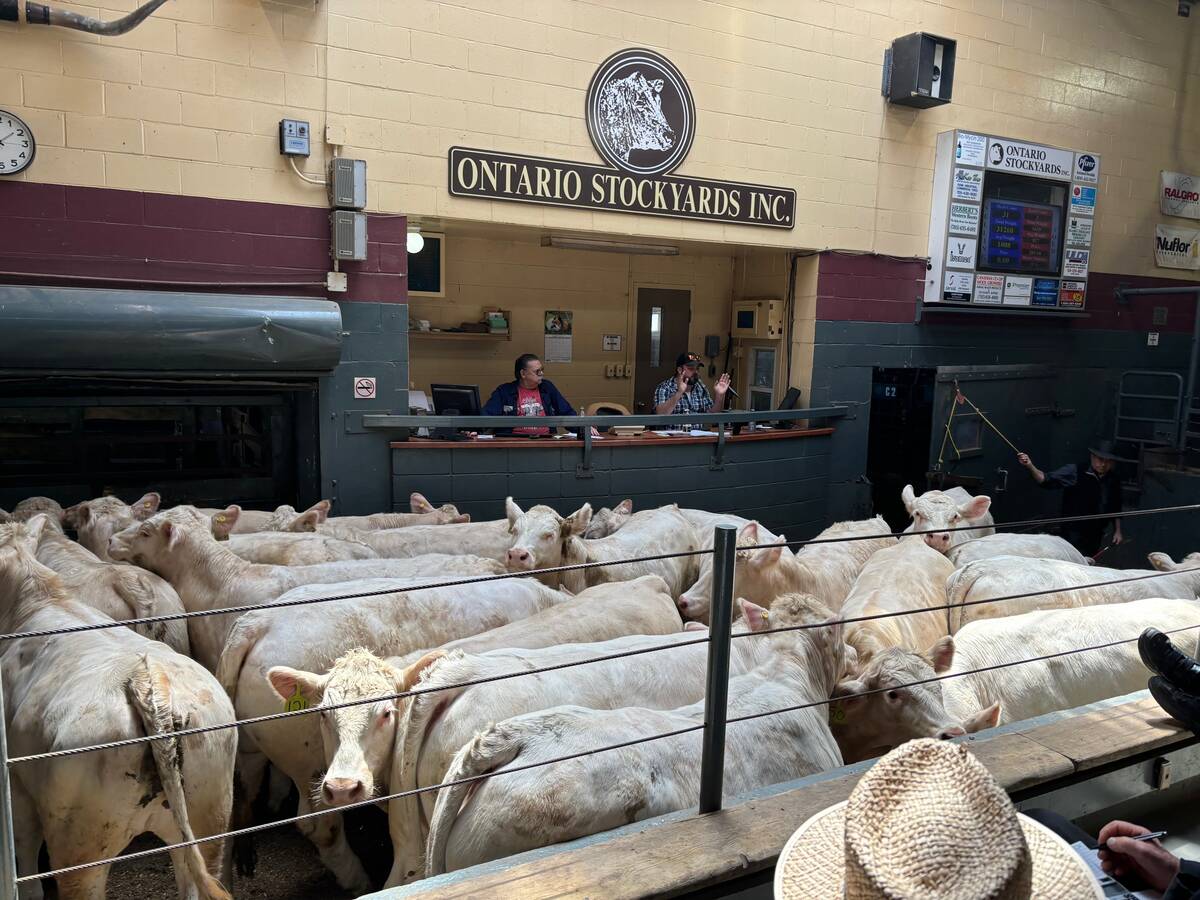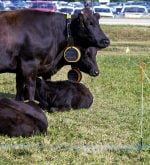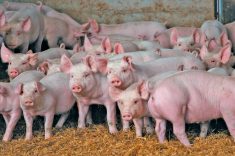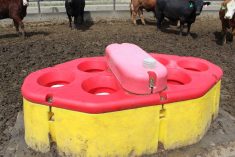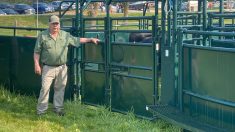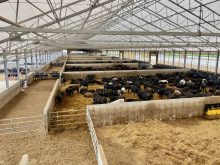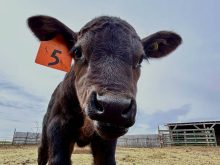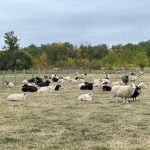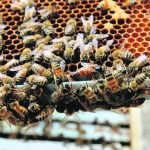Ontario Stockyards will bring a scaled-down version of a “pre-sort” auction to its Cookstown facility starting Sept. 18.
The auction company is aiming to adopt a version of cattle sales that has become increasingly common in the Canadian west.
Why it matters: This represents the first time cattle producers will have access to a pre-sort service without having to first sign on to a specific management/nutrition/herd health protocol.
Billing it as a pilot project that will run monthly through December, the company — which also operates markets in Brussels and Hoard’s Station — explained on its Facebook page recently that the sales will “comingle cattle of multiple producers into larger lots based on weight, shape, colour, sex and vaccination status. These larger uniform lots are attractive to more buyers, thus bringing a premium price when compared to cattle sold as single or doubles.”
Read Also

Dissolving eartags could make pig traceability easier
A dissolving eartag for market hogs, called Clean Trace could reduce processing challenges and enable more individual management of pigs.
“Comingling also allows the smaller producers to sell at a premium and receive the volume benefits that larger producers enjoy,” the Facebook post added.
Cookstown general manager Ab Carroll, who wrote the Facebook post, told Farmtario that Ontario Stockyards does “a pile of business with (auction markets in) the West” and members of the management team have already made several visits to see western-style pre-sort sales up close.
In Western Canada, groups of 40 or more cattle are typically offered in pre-sorts. Cookstown aims, in the beginning, to offer much smaller groups. The ideal is five, Carroll explained, but they’re expecting to usually be working with groups between three to 10.
If a single consignor comes in with a group larger than five that they’d like to see stay together, however, that group will stay together.
Ontario Stockyards will also take vaccination status into account, something that is rarely done in the West. Vaccinated cattle will not be offered for sale in the same group as non-vaccinated cattle.
For now, all breeds and all vaccination statuses will be accepted for the pre-sorts if they can be grouped accordingly.
“In the future, if we feel it’s beneficial to the producers and the buyers, we would look at having some breed-specific sales,” Carroll said.
Producer benefits
The benefits of pre-sorts, he says, come from putting cattle that are likely to appeal to a particular set of buyers in front of those buyers rather than just a random group of buyers that may change throughout the day.
“Our buyers are looking forward to this program as a number of them travel a long distance to take part in our sale and, by selling larger groups, they can fill trucks and pens quicker and return home at a more reasonable time in the day,” Carroll wrote on his Facebook post.
“This will help with your sale price as buyers will be more likely to keep interest and fill pens faster.”
Beef Farmers of Ontario president Craig McLaughlin told Farmtario that previous pre-sort sales in Ontario have typically been limited to cattle raised under a specific protocol, often by groups of producers from the same region. He cited sales at the Keady auction yard grouping cattle raised over the same time frame and same management regime in Bruce County.
“Those sales seem to have been successful, so maybe Ontario Stockyards is hoping to piggyback on some of that success,” he offered.
For McLaughlin, it’s a positive step.
“Auction markets know there are fewer cattle out there moving through their system than there might have been in the past … and they have to reinvent themselves a little. I like the idea of what (Ontario Stockyards is) doing.”
Carroll agreed it’s partly an effort to stay ahead of the competition in attracting consignors to send their cattle.
“We’re trying to find a way to add value for these smaller producers that maybe have only five or 10 or 20 cows.”
He adds that Cookstown is well-placed to successfully implement the model due to its efficient computer system that can handle the multiple transactions undertaken to offer pre-sort sales.
Cattle are delivered to the auction market the day/evening prior to the sale where they are sorted for weight, shape, colour, sex and vaccination status, he explained in his Facebook post. “These cattle are weighed individually (and) moved to designated pens for cattle of the same (characteristics).
“At the conclusion of the sale, our modern computer system automatically splits the transactions so each producer is paid for the individual weight they contributed to the group. This statement will also be accompanied by the RFID tag number in the calf’s ear so the producer can see what each calf weighed, what group they were a part of and how much that calf fetched.”
A webinar is planned for early September to explain the system, but Carroll is confident the idea will catch on.
“It’s actually better for the cattle,” he said. “They’re not standing around all day. They’re into the ring, out of the ring and then they’re back to getting feed and water.”


